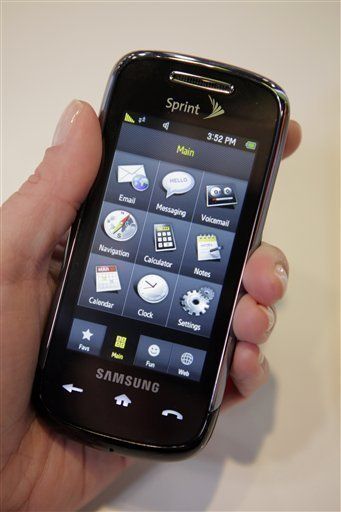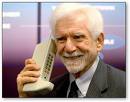
Today a mere glitch in cell phone service or -- don't say it -- a malfunction of our cell phones is enough to send most Americans into panic mode. Young people can barely remember a time when we weren't all telephonically tethered, and yet, cell phones are actually a relatively recent development.  The first cell phone call was said to have been made from the streets of New York City (how appropriate) in 1973. The caller was Martin Cooper of Motorola, who used his new invention to call a rival inventor at Bell Labs who was racing to be first with his own cell phone.
The first cell phone call was said to have been made from the streets of New York City (how appropriate) in 1973. The caller was Martin Cooper of Motorola, who used his new invention to call a rival inventor at Bell Labs who was racing to be first with his own cell phone.
Though Motorola created the first cell phone, scientists at Bell Labs still deserve a lot of credit. The first cell phones could only be used in a limited one-cell area (the area was variable but no more than 20 km). It was Bell Labs that conceived of cell phone towers and a method of handing off calls from cell zone to cell zone. (Today a call placed from a car on the highway usually continues quite smoothly, but only a few years ago, drivers experienced enough dropped calls to be reminded of the challenges of this tower-to-tower hand-off.)
Following Cooper's early call to his rival, Motorola set up a press conference to introduce Cooper's new invention. The press was summoned to the New York Hilton Hotel in April of 1973, and Martin Cooper was to demonstrate the new "wire-less" telephone by making the first call. Unfortunately, he accidentally dialed a wrong number. But he pulled off the gaffe with a joke: "Our new phone can't eliminate that, computer or not." (New York Times, April 4, 1973.)
The reporters then took turns using the new phone to call their own newspaper offices. Press reports of the day stated that Motorola was applying to the FCC for authorization to create a network that might be operable by 1976. (The necessary approvals did not come through until 1983.)
The Motorola phone was a far cry from the units sold today. The Motorola DynaTAC 8000X was the first cell phone introduced, and it looked like a good-sized handset for a regular phone and weighed 28 ounces -- almost two pounds. Imagine holding that to your ear.
Early cell phones were not only heavy, but they were very expensive. The 8000X cost almost $4,000. Battery life of the unit was about an hour. After one hour of use, the phone then required ten hours of charging time before it could be used again.
Until 1990 most phones were referred to as "car phones." (Radio telephones existed as early as the 1940s; most were closed-system units in emergency vehicles, though there were a few radio phones in private automobiles of the wealthy.) While early cell phones certainly provided mobile calling, their size and weight meant they were more practical when placed in a car. A few briefcase models were sold.) By the late 1980s phones were getting smaller.
When it comes to changes in telephone customs, two-pound cell phones are only the beginning. Many adults can remember rotary dials, party lines, and seven-digit telephone numbers where the exchange was identified by a name, such as Butterfield 8 or Lincoln 4.
To receive a free e-mail with stories of live operators and why an undertaker was the one who invented the first automatic telephone exchange, send me your name and e-mail address. kate@americacomesalive.com. Specify Phone in the subject line.